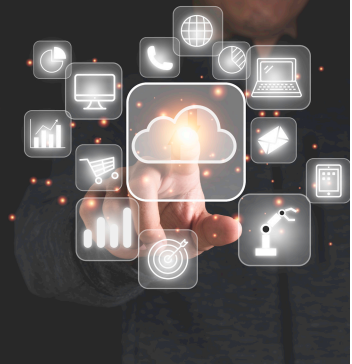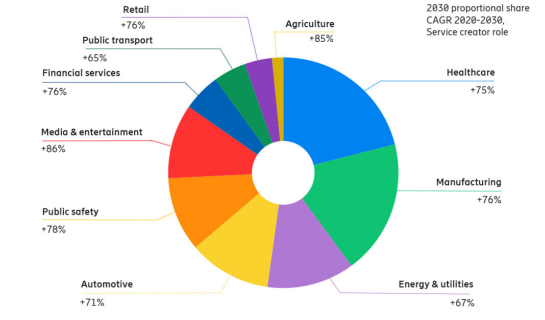Importance of technology during pandemic and how it impacts the Post-COVID-19 business world (APAC)

A necessary adaptation
Unprecedented health crisis like COVID-19 prompted many developing nations
across the globe to keep an open mind towards innovative applications. With half of
the world’s population under lockdown and governments around the world urging
people to limit contact, there is an increasing usage of online tools to engage in
virtual networking among individuals. For businesses, a transition to virtual working
environment is mandatory. It is well recognised that the advancement of technology
will be a key business consideration emerging from COVID-19 with companies further
upgrading it as part of their operational model. According to various news media, it is
inevitable that this transition might take root beyond the crisis period.
Hindsight or foresight
China was an early adopter to healthcare technologies and has leveraged Artificial
Intelligence (“AI”), Big Data, Cloud Computing, Blockchain and 5G to contain
the pandemic (QI, 2020). Prior to the outbreak, AI is already a phenomenon in
mainstream society, and it serves as a supporting tool to analyse troves of data quickly,
contextualise by learning algorithm and deliver to human decision makers (Uzialko,
2019). However, it is argued that AI had limitations such as lack of common sense,
lack of intuition, and often encode biases into outcomes (Sanders, 2019). As Albert
Einstein said, “in the midst of every crisis, lies great opportunity”. It is proven that in the
face of a pandemic, opportunity arises where AI algorithms has been improved and
successfully sped up the time of predicting and studying coronavirus’s RNA secondary
structure by 120 times and has reduced the waiting time for virus detectors (QI, 2020).
Meanwhile, Alibaba DAMO Academy has developed an enhanced AI algorithm which
has shortened the genetic analysis of suspected cases from several hours to half an
hour and could detect virus mutations accurately (QI, 2020).
Upgrading your processes
Besides, cloud computing plays a big role during the pandemic. In relation to social
distancing and lockdown measures, the demand for cloud-based video conferencing
and online tutoring has increased significantly. Various cloud service vendors have actively upgraded their functions and provided resources to the users. For example, Coca-Cola has entered into a five-year agreement with Microsoft Corp. to standardise its business operations on Microsoft’s cloud (Microsoft News Center, 2020). Judson Althoff, Executive Vice president, Worldwide Commercial Business, Microsoft, mentioned that the company, through leveraging Dynamics 365, Microsoft 365 and Azure, would be able to level up its digital innovation. This is done through better connecting people through breakthrough productivity and powerful information management, which he thinks, would drive continued business success over the next decade. As we all know, Singapore has positioned itself as a center of innovation at the heart of the world’s most dynamic economic region. Government agencies are proactively equipping companies in Singapore by with resources. Thereupon, it is foreseeable in the post-COVID-19 world, businesses will be more dependent on AI and cloud computing to streamline decision-making process, connect to people internally and externally, and provide forward-looking intelligence to stakeholders in every function.
Technology to the rescue
Another two technologies that are worth discussing during and after the pandemic would be Blockchain and 5G smart applications. Lianfei Technology launched the first Blockchain pandemic monitoring platform to track the real-time progress of COVID-19 in all provinces of China (QI, 2020). In business, Blockchain is used to provide users with visibility and transparency into their supply chains. Blockchain creates a permanent audit trail along every link in the supply chain, which allows users to monitor factors such as quality control, performance benchmarks and worker standards (Joseph, 2020). In a network of the blockchain, blocks of information provide a track of transactions which are cryptographically linked to previous blocks (Curtis, n/a). It caters an immutable record of transactions that every user in the system can rely on because it can be independently audited (Curtis, n/a). With its immutability feature, fraudulent activities can be detected and prohibited. Its transparency aspect also allows users to download and view the immutable transactions. These features has resolved problems faced by most of the companies with lack of communication and segregation. Besides, it improves efficiency of companies with high volume of transactions, for instance, Automotive, Insurance, Retailers and F&B sectors.
The technological landscape of the future
The fact that an emergency hospital was built within 10 days in China was an achievement by technology. 5G high-definition live broadcasting of the construction of hospitals provides a real-time view of the construction sites on a 24 hour basis (QI, 2020). Meanwhile, it also facilitates a “remote consultation platform” for medical experts from other provinces to work with each other
through video connections and consultations (QI, 2020). Whereas in Singapore, it is reported that Singtel and a joint venture by Starhub and M1 has recently won bids to operate 5G networks across the country (Tang, 2020). In the post-COVID-19 world, 5G will be the new trend to transform industries and society. Companies especially those would benefit from high-resolution, fast streaming video will certainly be affected. The chart below shows the proportional market shares for different industries that benefits from digitalisation in 2030 (Ericsson, n/a)

Conclusion
COVID-19 has been a major driving force for digital transformation around the world. Today’s tech-savvy customers are demanding a frictionless, high quality and personalised experiences that businesses can only fulfill by embracing these digital tools and platforms. As such, businesses should start budgeting for technology upgrades in order to gain competitive advantage over their competitors. Businesses shall maintain agility and develop strategy to plan for its future business, market and operating environment. Nokia’s slide shall serve as an expensive lesson to all businesses to make sure they do not repeat it.
written by
Jeanette Eng
Analyst, BDO Consultants Pte Ltd
Article and images source: BDO

